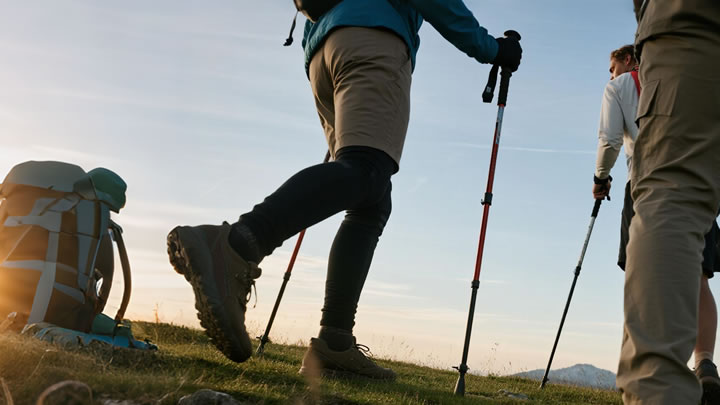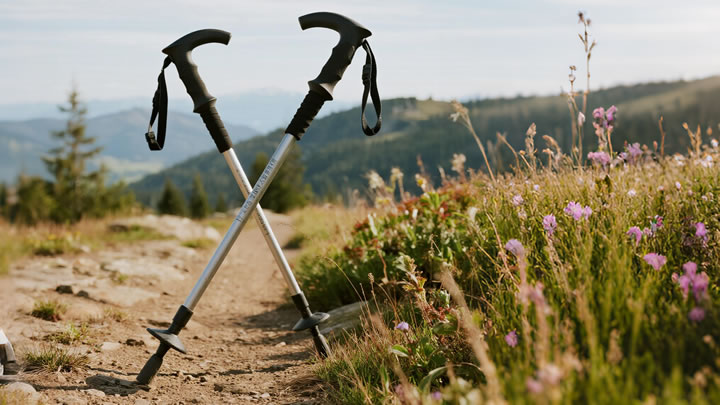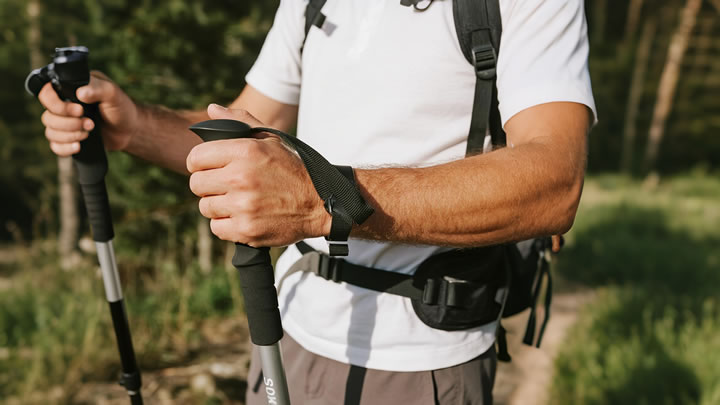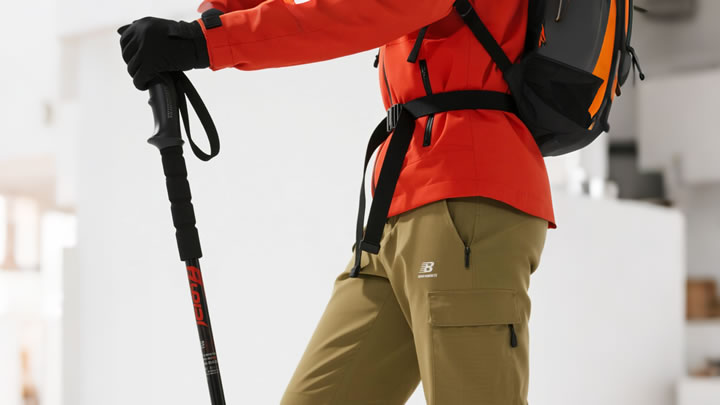How to adjust trekking pole wrist straps correctly?
Properly adjusted wrist straps are critical for efficient, comfortable, and injury-free hiking. They transfer weight from your arms and hands to your poles' shafts, reducing fatigue, preventing blisters, and improving stability. Follow this comprehensive guide to master the technique.
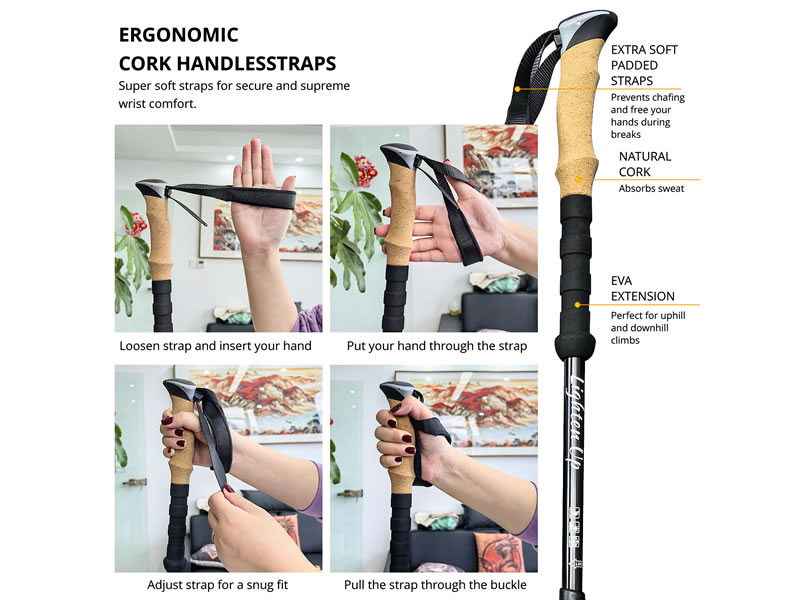
Why Correct Adjustment Matters:
- Reduces Hand & Wrist Strain: Transfers load to your forearm bones.
- Prevents Blisters: Eliminates friction from loose straps.
- Improves Efficiency: Leverages pole spring for propulsion.
- Enhances Stability: Secures poles during slips or scrambles.
- Prevents "Death Grip": Allows relaxed hands, improving circulation.
Step-by-Step Adjustment Guide:
- Thread Your Hand UPWARDS (The Golden Rule):Never put your hand down through the top of the loop.Always slide your hand upwards through the strap opening from below. Position the strap between your thumb and index finger.
- Secure the Strap Position:Grip the pole handle firmly.The strap should now lie flat across the back of your hand, anchored securely at the heel of your palm and the top of your wrist.
- Tighten Strategically:Pull the free end of the strap through the buckle.Tighten until snug but not constricting.Test: Open your hand slightly while holding the pole loosely. The strap should keep the pole securely in place without cutting off circulation or forcing your wrist into an angle.
- Check Wrist Alignment:Plant the pole tip slightly ahead as if walking.Your wrist should remain in a neutral, straight line with your forearm.Avoid: Bending your wrist sharply upwards or downwards.
Common Mistakes & Fixes:
- Mistake: Straps too loose.Result: Poles slip, causing blisters and requiring excessive grip strength.Fix: Re-thread and tighten firmly.
- Mistake: Straps too tight.Result: Restricted blood flow, numbness, pressure points.Fix: Loosen slightly; ensure a secure but comfortable hold.
- Mistake: Threading hand downwards.Result: Poor weight transfer, instability, increased wrist strain.Fix: Always thread upwards!
- Mistake: Strap under palm (not across back of hand).Result: Loss of control and inefficient power transfer.Fix: Reposition strap correctly at palm heel/wrist.
Pro Tips for Different Scenarios:
- Steep Ascents: Slightly loosen straps to allow more wrist flexibility for planting poles higher.
- Steep Descents: Slightly tighten straps for maximum weight transfer and joint relief.
- Long Distance: Periodically re-check tightness; hands can swell.
- Wearing Gloves: Adjust straps while wearing your typical hiking gloves.
The "Why" Behind the Fit:
Correctly adjusted straps transform poles into natural extensions of your arms. The tension creates a lever system: when you push down through the strap during a plant, energy transfers efficiently through the pole shaft, propelling you forward and significantly reducing impact on knees and joints. A "death grip" wastes energy; a secure strap allows an open, relaxed hand, improving endurance.
Conclusion: Comfort = Performance
Taking 60 seconds to adjust your trekking pole wrist straps correctly isn't just about comfort – it's fundamental to hiking performance and safety. Proper technique reduces fatigue, prevents injury, and unlocks the full biomechanical benefits of your poles. Remember: Thread Up, Position on Palm Heel/Wrist, Snug but Not Tight, Neutral Wrist Alignment. Master this, and you'll hike farther, faster, and with less strain.

